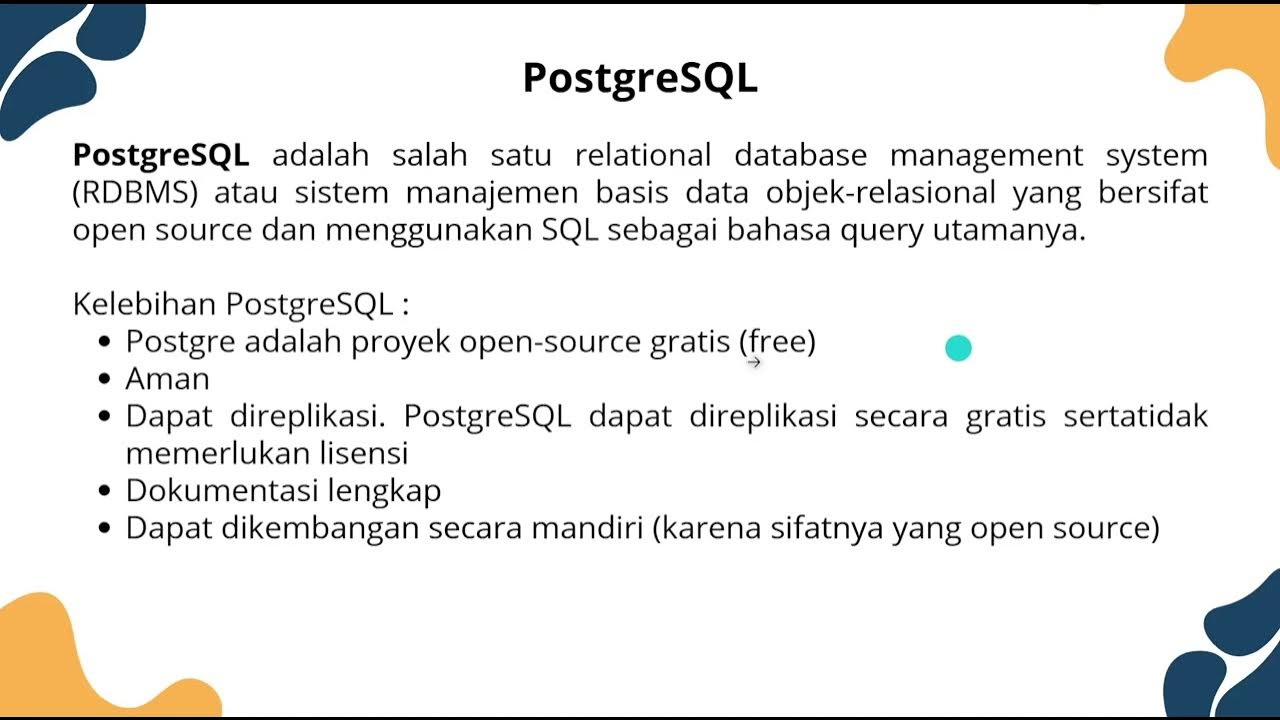Relacionamentos One-to-one, One-to-many e Many-to-many - Curso de SQL com MySQL - Aula 2
Summary
TLDRThe video discusses the foundational concepts of relational databases, focusing on the importance of understanding relationships between users and data records. It covers the one-to-many relationship where one user can have multiple associated records, clarifying terminology to prevent confusion. The speaker emphasizes the need for structured design in databases and prepares participants for practical applications in future lessons. The session aims to build a solid understanding of database management, ensuring that learners can effectively utilize these concepts in real-world scenarios.
Takeaways
- 😀 Users need to understand the importance of defining relationships in a database, especially one-to-many relationships.
- 📊 Clear documentation of user records is essential for efficient data management and clarity.
- 🛠️ The relationship between users and records should be established properly to avoid confusion.
- 🔍 Emphasizing a specific entity (referred to as 'Rose') helps clarify the framework for data management.
- 📚 The instructor plans to delve into practical database work in the next lesson.
- 💡 Understanding relational databases is crucial for organizing complex datasets effectively.
- 🔗 It's important to ensure that all user records are linked accurately to their corresponding entities.
- 🎓 The lesson aims to build foundational knowledge that will aid in future database tasks.
- 📈 Establishing proper relationships can enhance the efficiency of database queries and operations.
- 🚀 The upcoming session promises to transition from theoretical concepts to hands-on database experience.
Q & A
What is the main focus of the video?
-The video primarily focuses on developing user relationships and database structures, specifically highlighting how to manage user records.
How does the instructor explain the user-to-record relationship?
-The instructor explains that each user can be associated with multiple records, emphasizing the importance of defining this relationship clearly to avoid confusion.
Why is it important for a record to exist in the database?
-It is crucial for a record to exist in the database to form a coherent structure that allows for effective data management and retrieval.
What key concept does the instructor use to describe the relationship between users and records?
-The instructor uses the metaphor of 'one user to many records' to illustrate how users can have multiple associated entries in the database.
What does the instructor plan to do in the next lesson?
-In the next lesson, the instructor plans to start working directly with the database, applying the concepts discussed in the current lesson.
What does the instructor suggest about the clarity of the relationship definitions?
-The instructor stresses the need for clear definitions of relationships in order to prevent confusion and ensure accurate data representation.
What implication does the instructor’s teaching have for database design?
-The instructor's teaching implies that understanding user relationships is fundamental for effective database design, influencing how data is structured and accessed.
How does the instructor ensure that students understand the concept of records?
-The instructor uses examples and metaphors to clarify the concept of records and their importance in the context of user data management.
What background knowledge does the instructor assume the students have?
-The instructor assumes that students have a basic understanding of database concepts, as he builds on this knowledge to explain more complex relationships.
What warning does the instructor give regarding the relationship between users and records?
-The instructor warns that without proper management of user-record relationships, the database can become disorganized, leading to difficulties in data retrieval and analysis.
Outlines

This section is available to paid users only. Please upgrade to access this part.
Upgrade NowMindmap

This section is available to paid users only. Please upgrade to access this part.
Upgrade NowKeywords

This section is available to paid users only. Please upgrade to access this part.
Upgrade NowHighlights

This section is available to paid users only. Please upgrade to access this part.
Upgrade NowTranscripts

This section is available to paid users only. Please upgrade to access this part.
Upgrade NowBrowse More Related Video

SBD1 Pertemuan 1 | 3IA09,3IA10,3IA11,3IA13,3IA16

SQL Tutorial | Relational Databases and Key Terms Explained

Relational Database

Access: Introduction to Databases

Last Minute Revision DBMS | CLASS 10 IT CODE 402 | Database Management System Important Notes

KONSEP DASAR SISTEM MANAJEMEN BASIS DATA #1 [PERANCANGAN BASIS DATA]
5.0 / 5 (0 votes)